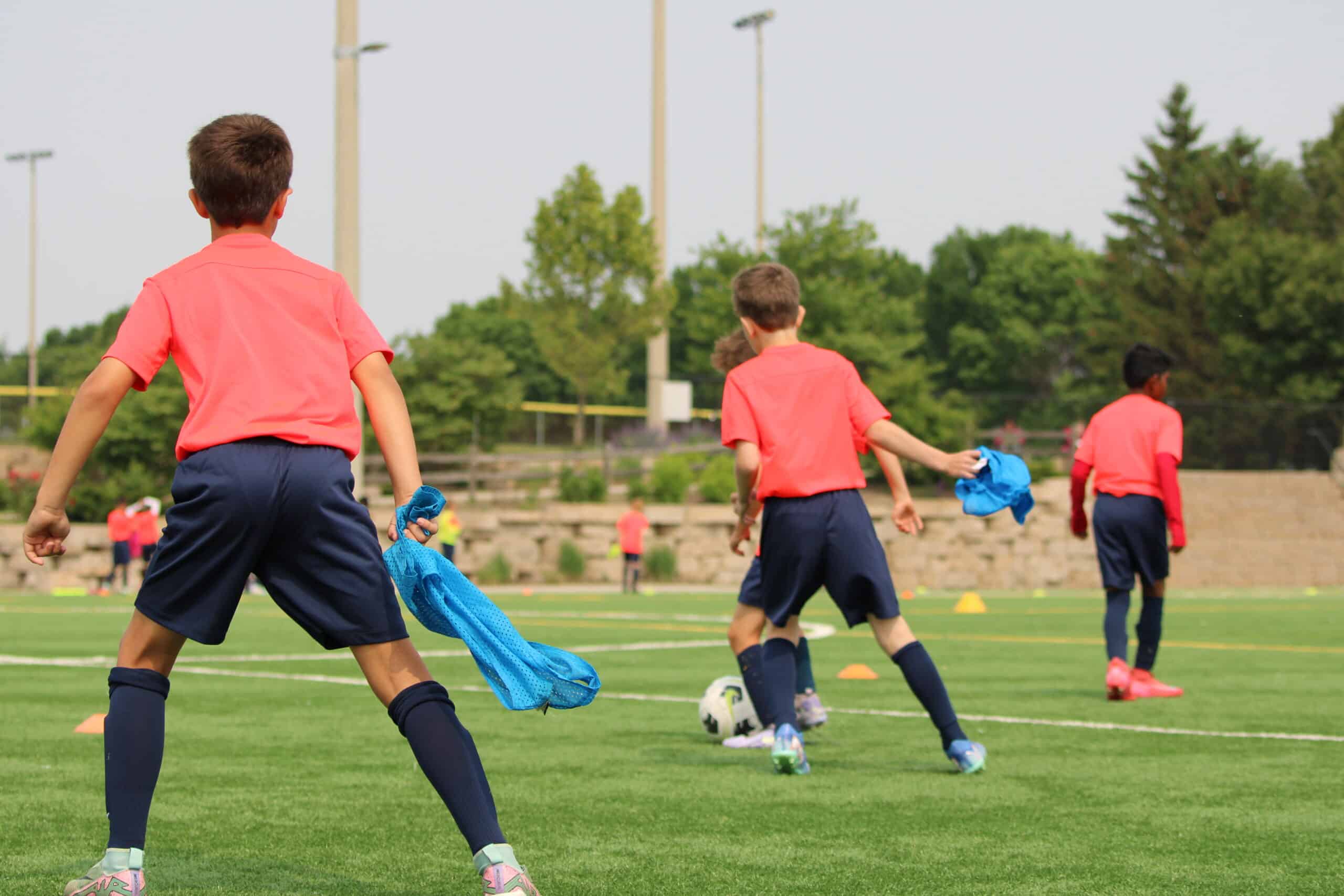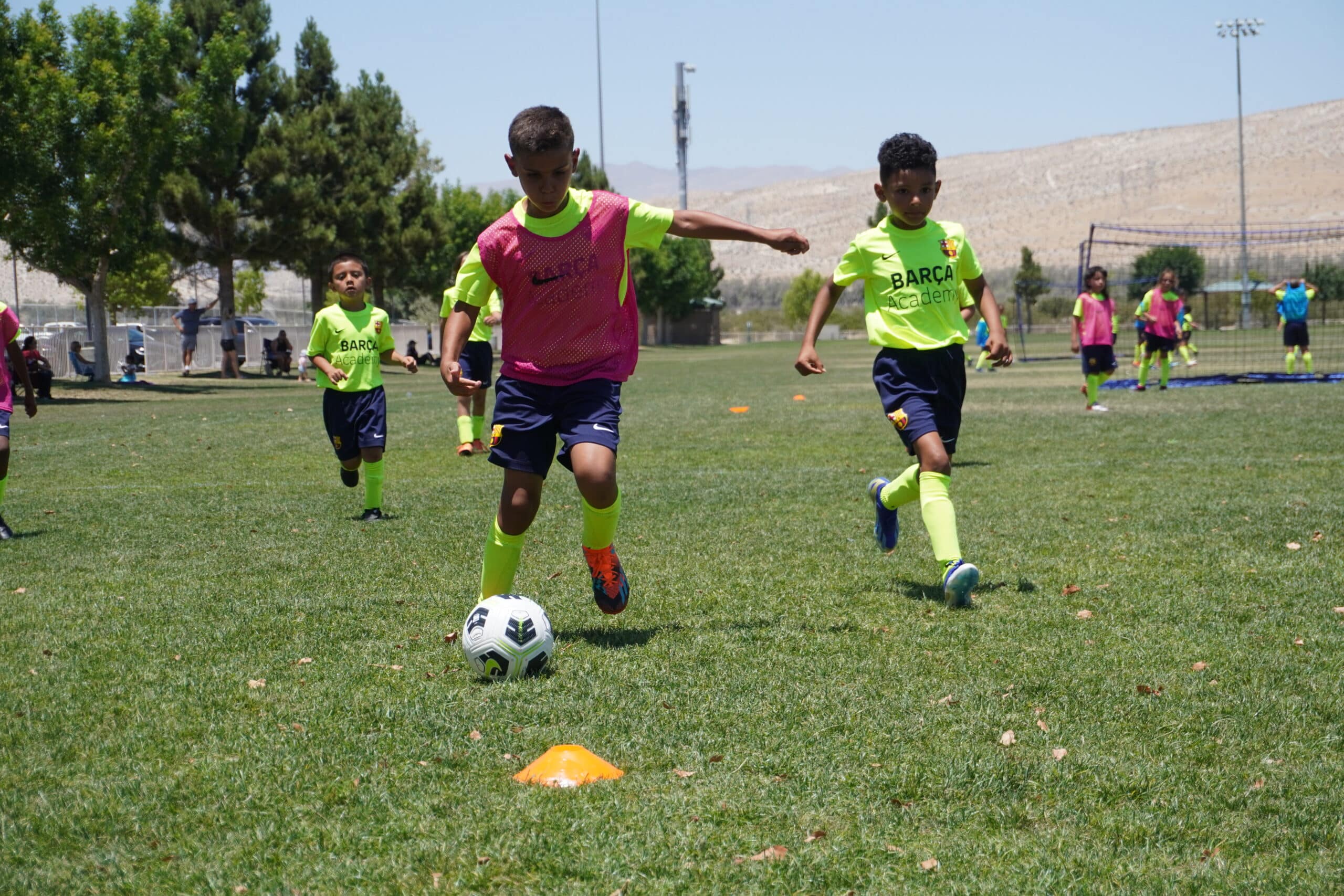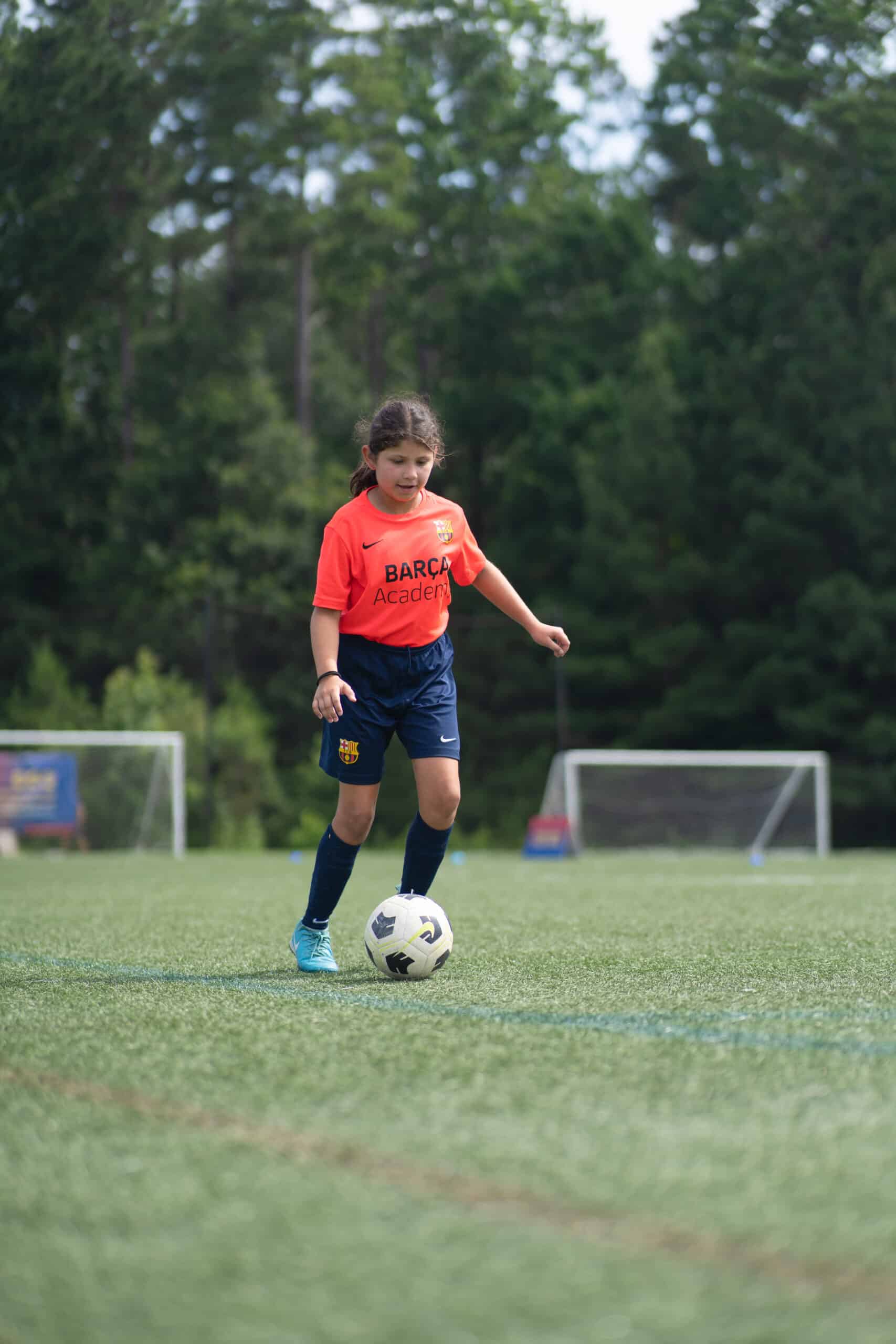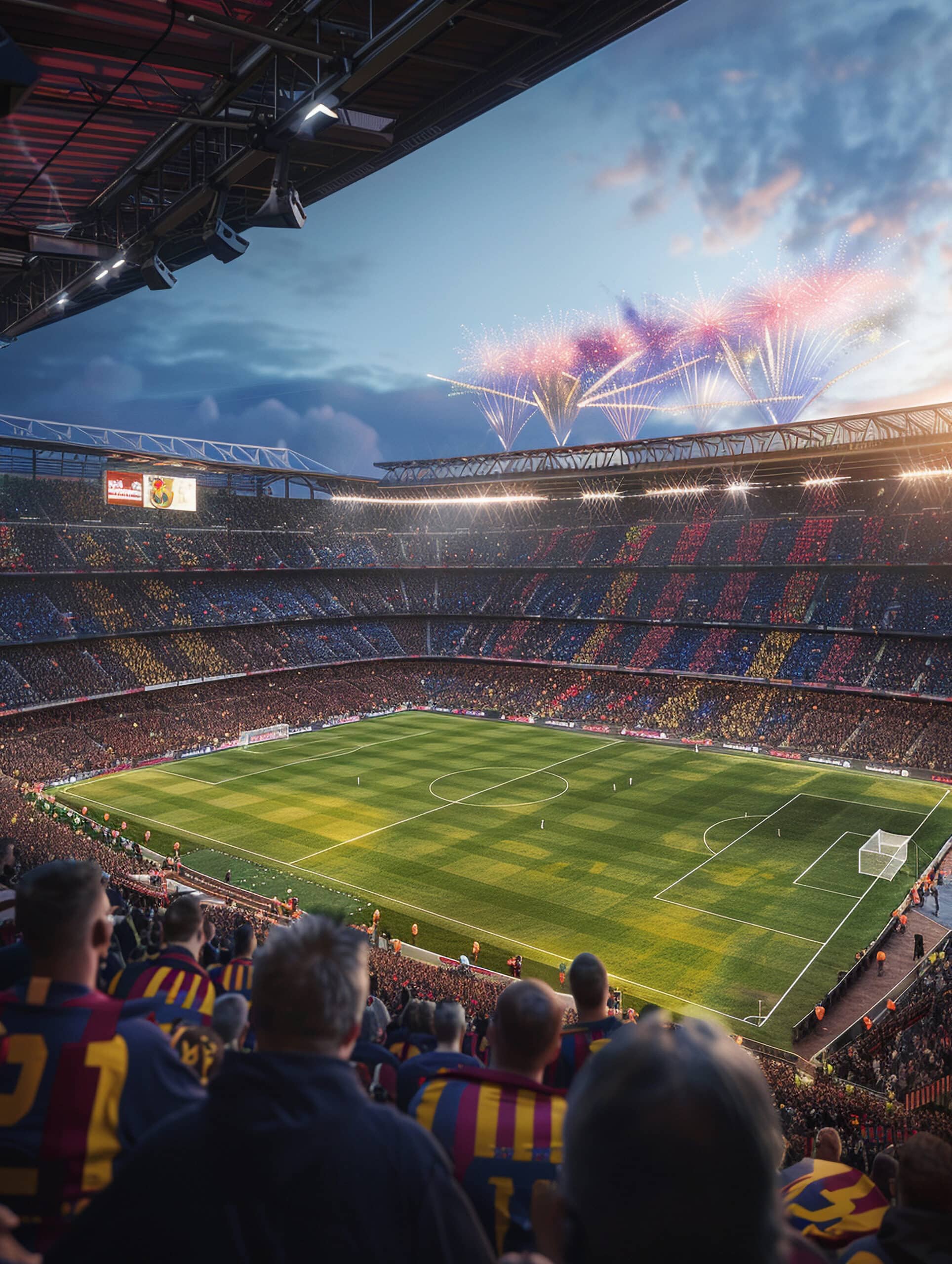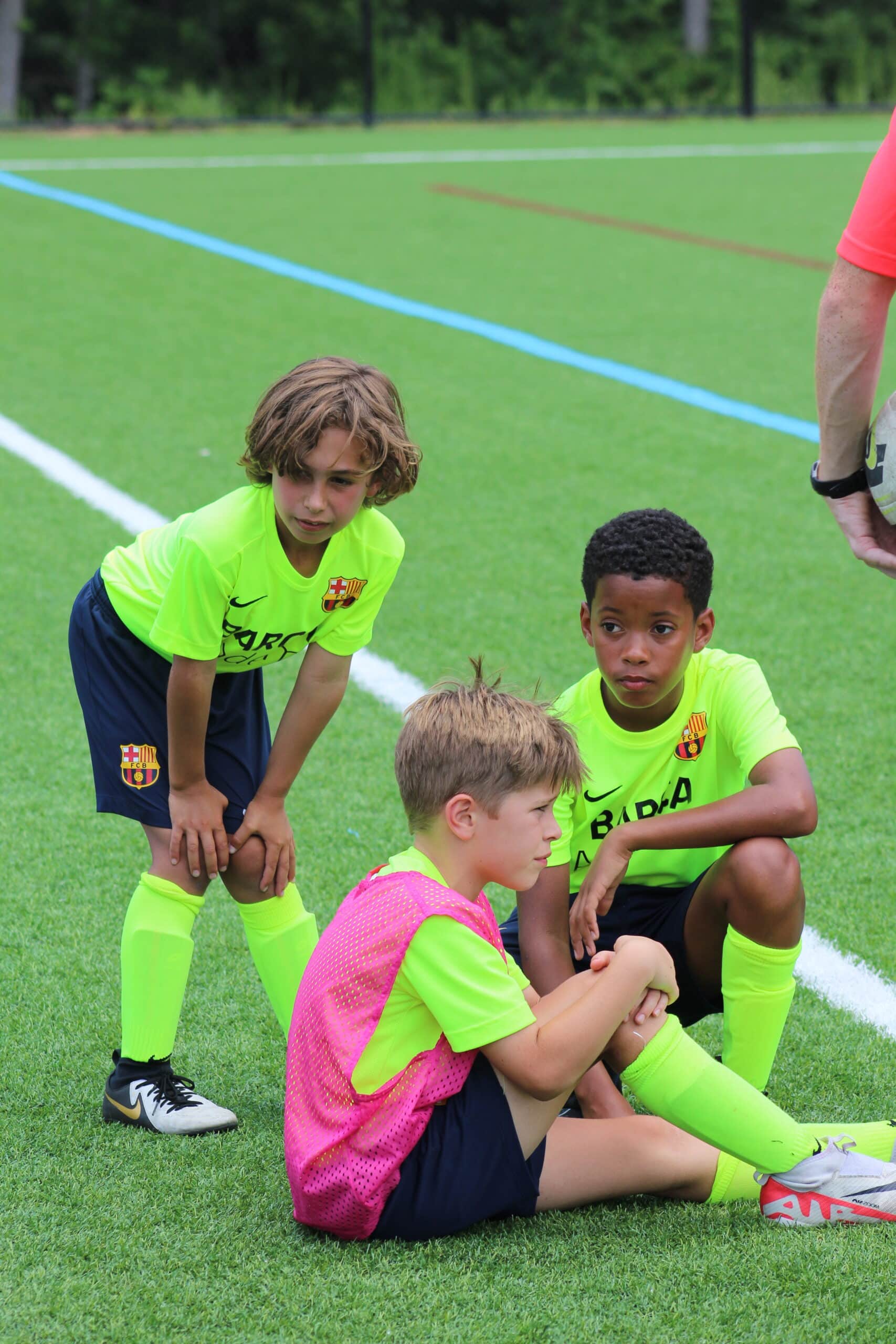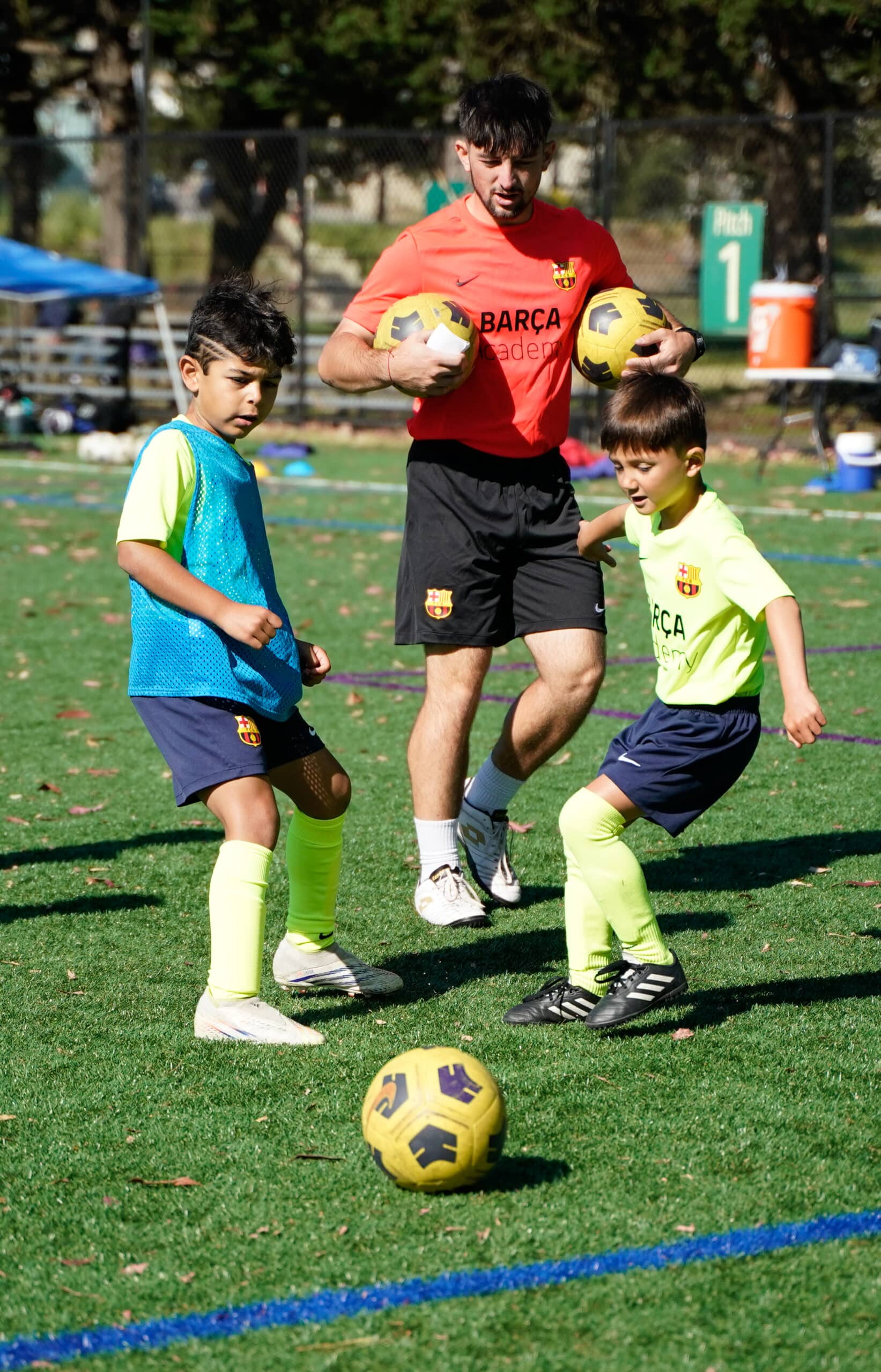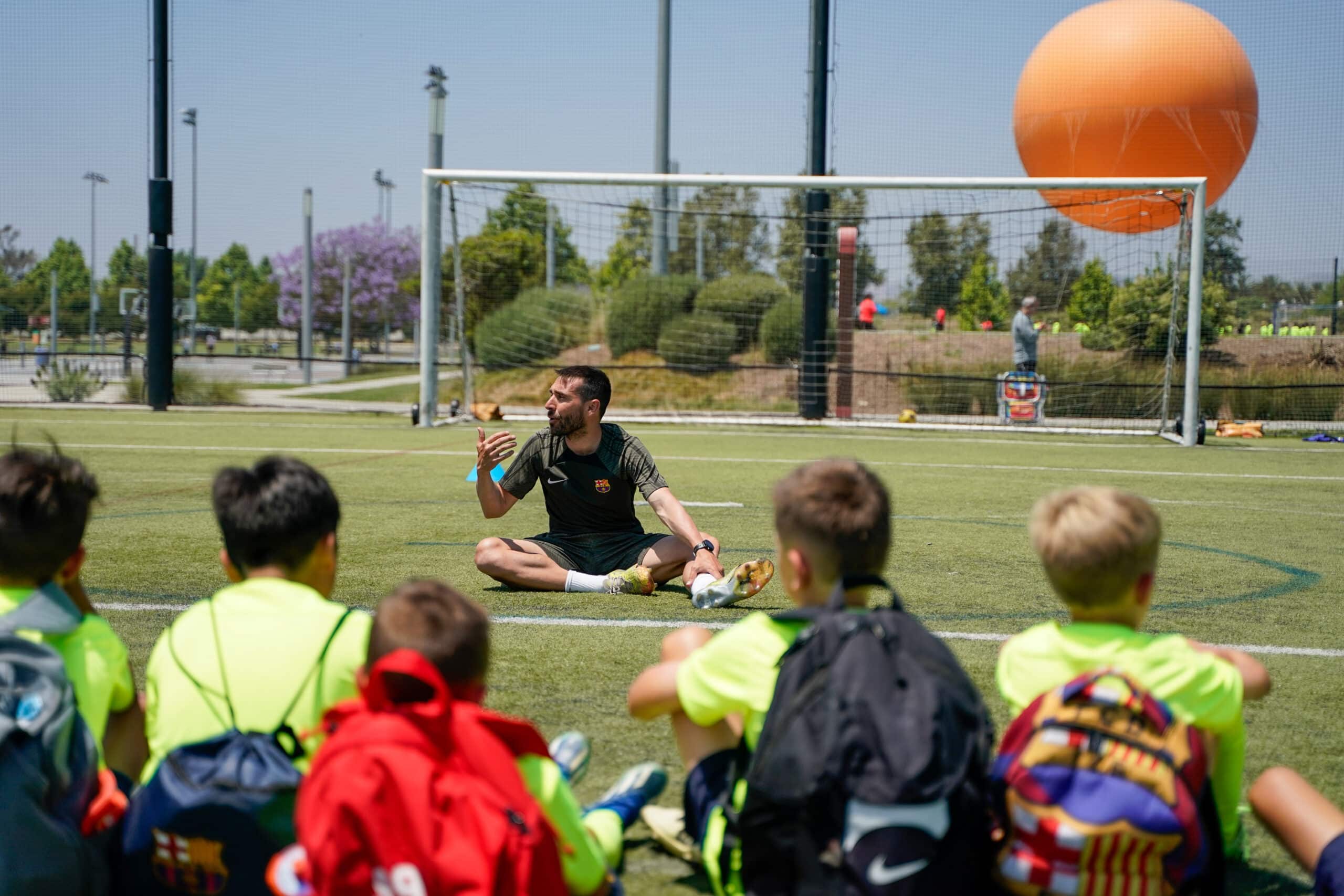Imagine stepping onto a soccer field where every blade of grass seems alive, and the ball at your feet could make you a hero. Some players sprint, some defend, some create magic with every pass. But how do all these roles come together to make a team unstoppable? Today, we’re going to take a fun journey through the field with soccer positions explained.
At Barça Academy US, kids don’t just play soccer—they dive into the world of teamwork, skill, and strategy just like the stars of FC Barcelona. With expert coaches guiding every drill and position, young players learn the magic of the game while having tons of fun. Let’s learn about the different soccer positions!
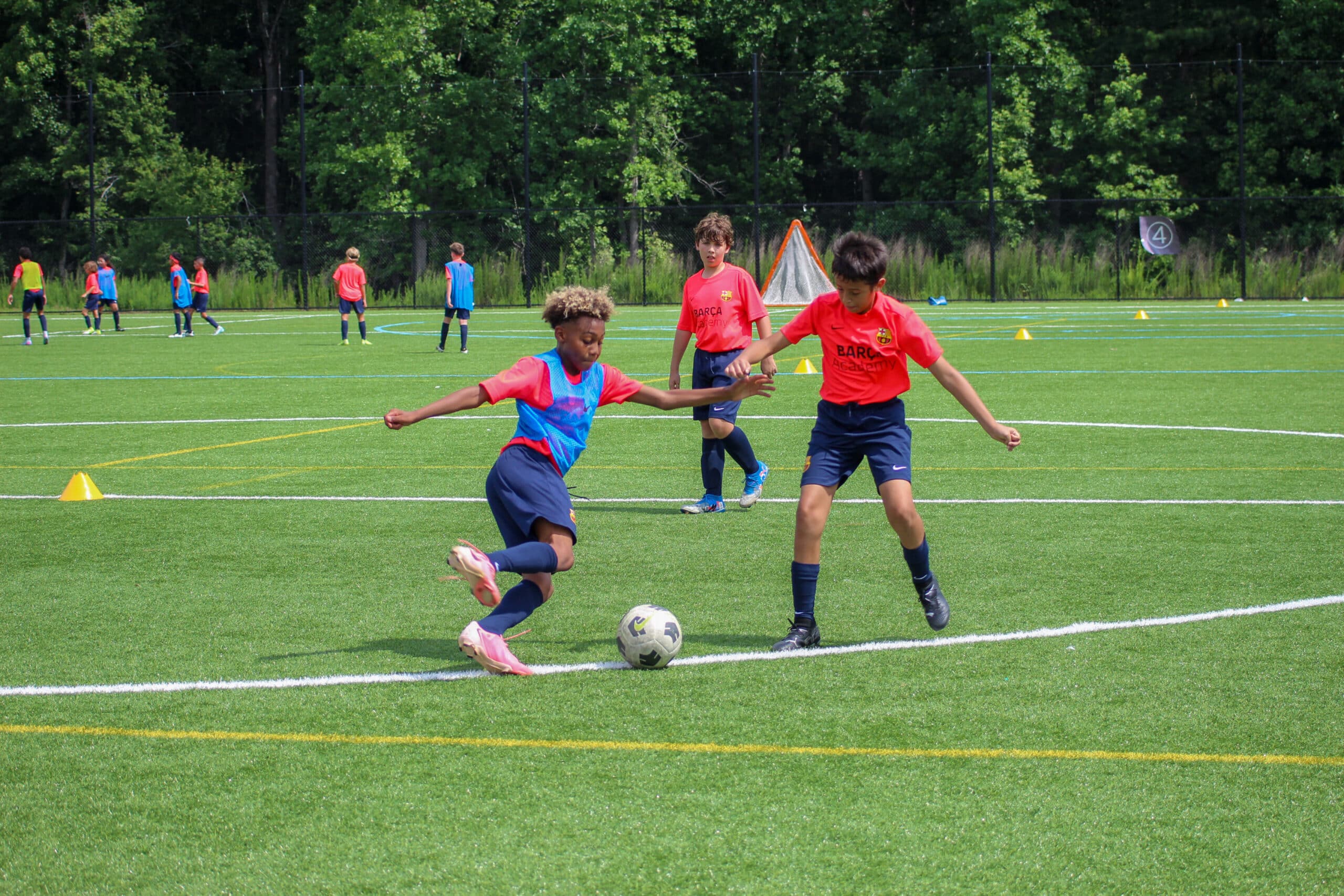
Understanding the role of forwards in soccer
Forwards, often known as strikers, are the offensive powerhouses of a soccer team. They’re the ones we all scream for when they break away, the ball at their feet, with only the goalkeeper to beat. But, what makes a forward truly exceptional? Let’s break it down.
Goal scoring machines
Their role involves creating scoring opportunities and, most importantly, converting those opportunities into goals. A prolific forward can change the outcome of a game with a single brilliant move or a well-placed shot, so they need to have a killer instinct and an eye for the goal.
Technical skills and speed
These players need excellent ball control to maintain possession under pressure, and agility to get past defenders. Plus, a good forward needs a burst of speed, whether it’s to latch onto a through ball or to create space for a shot. Remember, quickness with and without the ball can be a forward’s best friend.
Physical and mental strength
Forwards also need to be able to hold their ground, maintain ball possession and keep their focus. This requires not just physical strength, but also mental toughness. Facing down a defender or staring at a goalkeeper as you prepare to take a penalty kick can be nerve-wracking. It takes resilience and composure to succeed in these moments.
Playmaking abilities
Did you know forwards also play a critical role in setting up their teammates? This is where playmaking abilities come in. Whether it’s a clever pass, an intelligent run, or a well-timed cross, forwards need to have the vision and creativity to open up defenses and create opportunities for their team.
- Teamwork: they need to work with their teammates, understand their movements, and play to their strengths. It’s all about being a team player.
- Awareness: they need to know where the defenders are, where the goalkeeper is positioned, and where their teammates are. This allows them to make smart decisions and seize opportunities as they arise.
A close look at midfielders: the heart of the team
Known as the “engine room” of the team, midfielders often control the game’s flow and rhythm.
Decoding the midfielders’ role
What exactly does a midfielder do? In simple terms, their role is to connect the defense with the attack. They’re the link between the two, handling both offensive and defensive responsibilities. They have the task of maintaining possession of the ball, creating goal-scoring opportunities, and preventing the opposition from scoring.
Playing the field: attacking and defensive midfielders
Did you know there are different types of midfielders? There are primarily two categories:
- Attacking midfielders: their primary task is to create scoring opportunities and, often, to score themselves.
- Defensive midfielders: they are the protectors and the first line of defense, sitting in front of the defenders. Their job is to intercept the ball, make tackles, and stop the opposition from advancing.
Box-to-box midfielders: the all-rounders
Besides these two, there’s another breed of midfielders, often known as box-to-box midfielders. These are the players who can do it all. They defend, they attack, they create, they score. They run up and down the pitch, contributing at both ends of the field.
Mastering the midfield: a skillful affair
Being a successful midfielder is no easy feat. It requires a comprehensive skill set, including ball control, passing accuracy, vision, and tactical awareness. Not to mention, stamina is vital. After all, midfielders often cover the most ground in a game.
And let’s not forget about leadership. Many captains of soccer teams are midfielders because they’re in the thick of the action, influencing the game’s course, and inspiring their teammates.
The importance of defenders in soccer strategy
No matter how much firepower you have upfront, without a reliable backline, chances are, you’re inevitably going to crumble. So, let’s dive in and talk about the unsung heroes of any soccer team: the defenders.
Defenders: the unshakeable foundation
Often outshone by the flashy goal scorers, defenders are the sturdy, resilient backbone that any successful soccer team is built upon. They are primarily responsible for keeping the opposing team’s forwards at bay, blocking their shots, and frustrating their attacking maneuvers. But that’s not all – they also play a pivotal role in launching attacks and maintaining possession.
The versatile roles of defenders
Defenders aren’t just about blocking and tackling, their role is much more versatile:
- Centre-backs: these are the first line of defense against the opposition. Their primary job is to intercept the ball, make crucial tackles, and clear the ball from danger zones.
- Full-backs:positioned on the wider parts of the field, full-backs both defend against wide attacks and initiate attacks from the flanks. They often combine with midfielders and forwards to create scoring opportunities.
- Sweeper: they are the last line of defense before the goalkeeper. Positioned deeper than the rest, they have the responsibility to ‘sweep up’ any balls that breach the defensive line.
The strategic catalysts
Although defenders’ primary role is to protect their goal, they’re also often the origin of an attacking move. It’s not uncommon to see a defender making a long pass upfield to a forward or a midfielder, turning a defensive situation into a potent attack. This ability to transition swiftly from defense to attack is a crucial strategic asset in modern soccer.
Goalkeeper: the last line of defense
The goalkeeper, or ‘keeper as they are often referred to, is the last line of defense in preventing the other team from scoring a goal.
What does a goalkeeper do?
Their primary responsibility is to prevent the ball from entering the goal. This might seem like a simple task, but it requires a diverse set of skills and abilities. They use their hands to catch, deflect, and save the ball, something no other player on the field is allowed to do. However, a goalkeeper’s role goes beyond just stopping the shots.
- Organizing the defense: goalkeepers have a perfect view of the entire field, so they play a crucial role in organizing the team’s defense. They instruct their defenders, telling them where to position themselves, and alerting them to potential threats.
- Starting attacks: after making a save, the goalkeeper often starts the team’s next attack, either by throwing the ball to a teammate or kicking it down the field.
What skills do goalkeepers need?
Goalkeeping requires a unique mix of physical and mental skills. Here are a few of the most important:
- Agility and reflexes: a goalkeeper needs to be able to move quickly and respond instantaneously to shots, often diving or leaping to reach the ball.
- Communication: as the team’s last line of defense, a goalkeeper must be able to communicate clearly and effectively with their teammates to organize the defense.
- Decision-making: they often have to make split-second decisions, such as whether to try and catch a ball, punch it away, or stay on their line.
- Bravery: they put their bodies on the line, often leaping into a crowd of players to get to the ball. This requires a high level of courage and fearlessness.
While a goalkeeper’s responsibilities might seem daunting, the position can be extremely rewarding. A great save can turn the tide of a game and can be just as thrilling as scoring a goal. If you’re brave, agile, and have lightning-quick reflexes, the goalkeeper position might be the perfect fit for you.
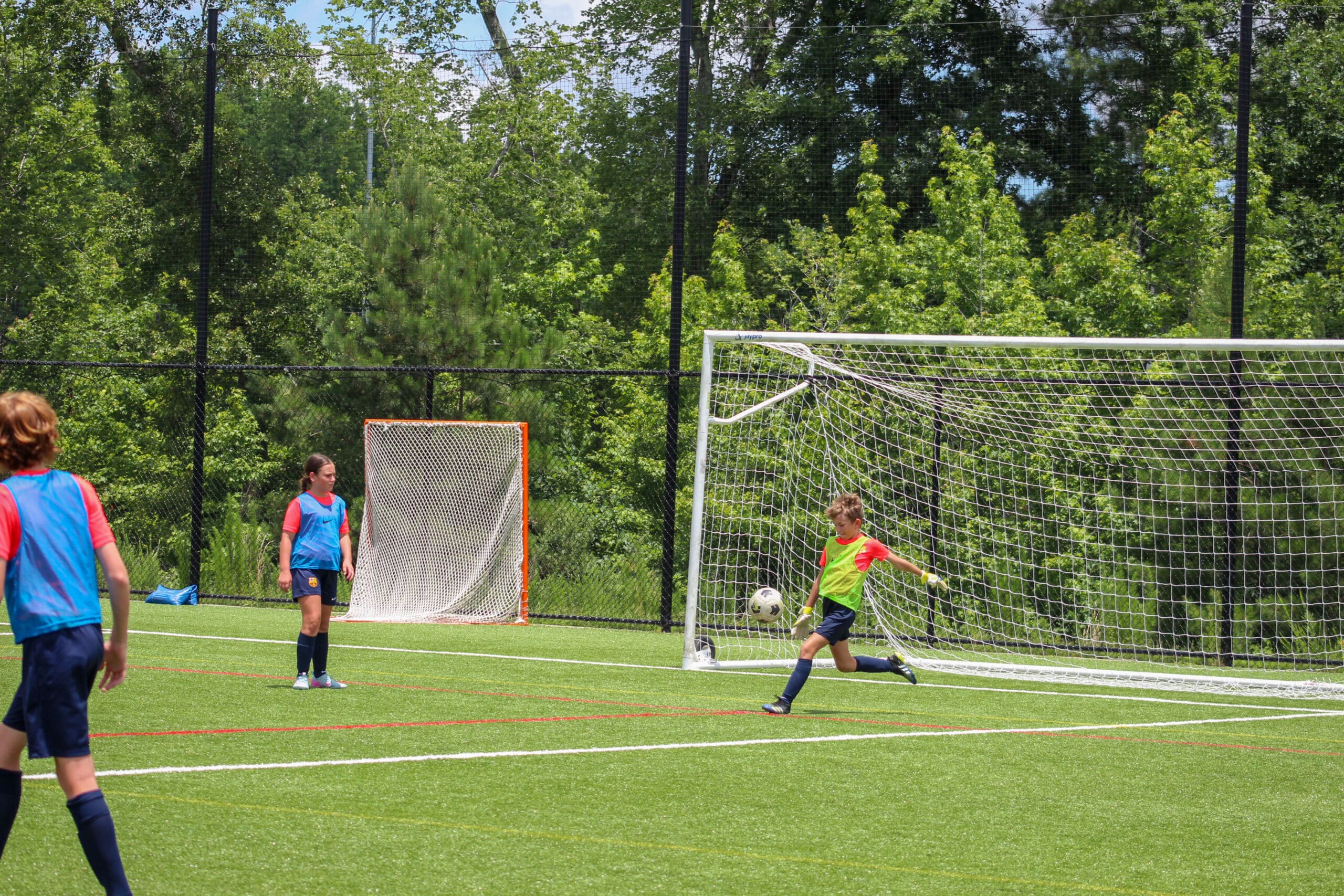
The role of wing-backs and full-backs
Ever seen a soccer game and wondered about the importance of those players darting down the sides of the field? These are the wing-backs and full-backs. With the evolution of soccer tactics, their roles have become crucial in setting the pace of the game. Let’s explore the significance of these positions.
Wing-backs: the hybrid players
Traditionally, wing-backs are a blend of wingers and full-backs. Their primary role was to provide width to the team and support the attack while also performing defensive duties.
- Attacking role: they are often seen overlapping with the wingers in the offensive half, whipping in crosses, and even scoring goals. They are the extra man in attack, creating numerical superiority and stretching the opponent’s defense.
- Defensive role: when their team loses possession, wing-backs have to quickly transition to defense, guarding the flanks against opposition wingers. Their speed, stamina, and positional awareness are crucial in maintaining the balance of the team.
Full-backs: the defensive stalwarts
In contrast, the traditional role of full-backs is more defensively oriented. Positioned on either side of the central defenders, they are tasked with thwarting the opposition’s wingers and preventing crosses into the box.
- Defensive duties: full-backs often engage in one-on-one duels with the opponent’s wingers. They need to be good tacklers and must have the pace to keep up with speedy wingers.
- Attacking contribution: however, in modern soccer, full-backs are increasingly involved in attack too. They overlap with their wingers, deliver crosses, and even cut inside to shoot or pass.
Positional variations: understanding different formations and tactics
In soccer, having a solid formation and tactical approach can often be the difference between winning and losing. It’s like a well-choreographed dance; when every player knows their place and purpose, magic happens on the pitch.
Formations: the building blocks
Formations in soccer are numerical representations of how players are positioned on the field. Ever heard of terms like 4-4-2, 4-3-3, 3-5-2? These are all formations. The numbers show the distribution of players starting from the defence to the attack. For instance, a 4-4-2 formation means four defenders, four midfielders, and two strikers.
- 4-4-2: this formation is often regarded as a “classic,” providing balance in the team. It’s ideal for a direct style of play, focusing on long passes and crosses into the box.
- 4-3-3: favoured by teams that enjoy possession-based soccer, it allows for fluidity and creativity in the attacking third with three forwards, while still maintaining a strong midfield and defense.
- 3-5-2: this formation is for teams that want to dominate the midfield. It offers flexibility, as the wide players can drop back to form a five-man defence when needed.
Tactics: the game plan
In soccer, tactics refer to the strategies employed by a team to gain an advantage over the opponent. They can include aspects such as pressing high, sitting deep and counter-attacking, or maintaining ball possession. They’re like your team’s secret sauce that gives you the edge.
For example, pressing involves putting the opponent under pressure by actively trying to regain possession. It’s like being a persistent bee buzzing around, not giving your opponent a moment’s peace. On the other hand, counter-attacking is about patiently waiting for the opponent to make a mistake, then quickly transitioning from defence to attack. It’s like playing a game of chess, plotting your moves, and striking when the time is right.
Shine in your position
Soccer is a game of teamwork, creativity, and discovering where you shine on the field. Every position has its own challenges, skills, and magic, and the fun comes from learning how each player contributes to the team’s success. At Barça Academy US, we train young athletes in all the different positions, from fearless goalkeepers to speedy forwards and creative midfielders, helping each player find their perfect spot on the field.
Ready to take your game to the next level? Join our camps and experience the excitement of soccer like never before!





